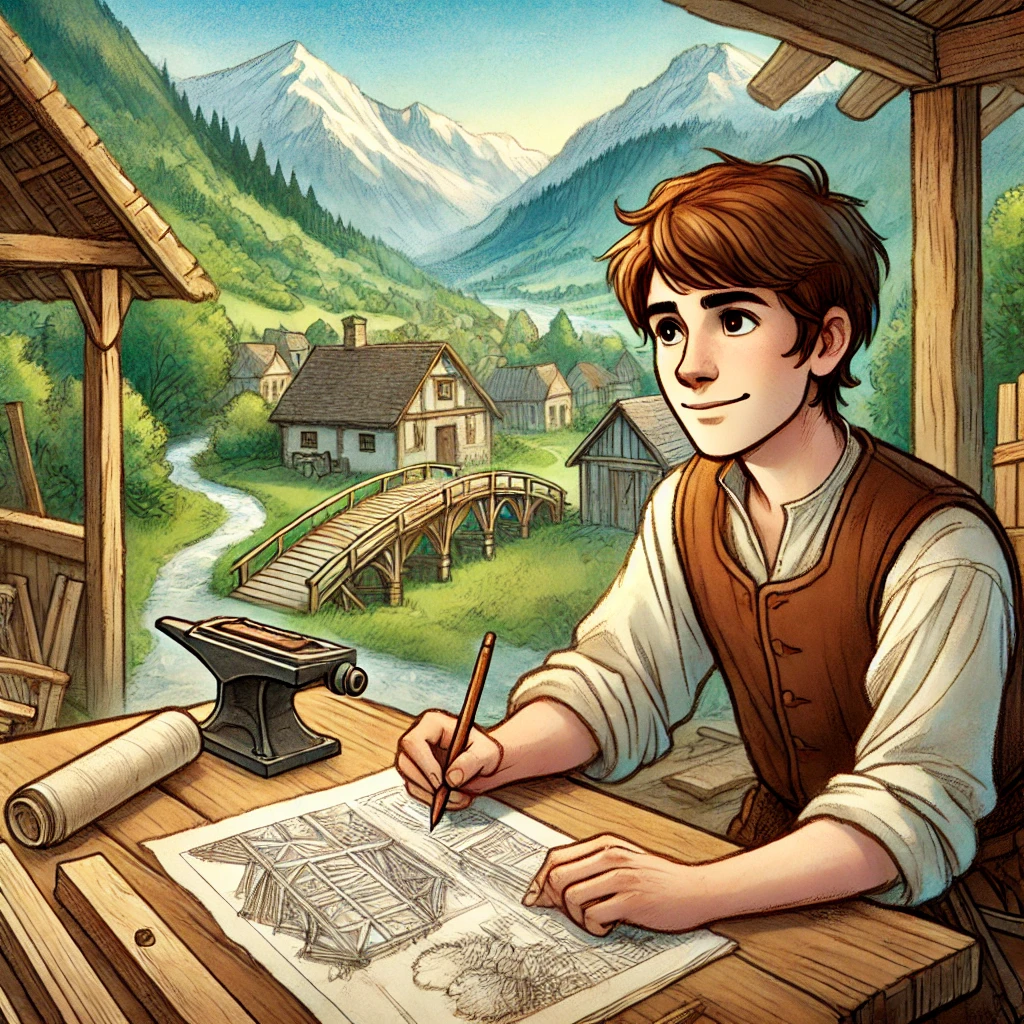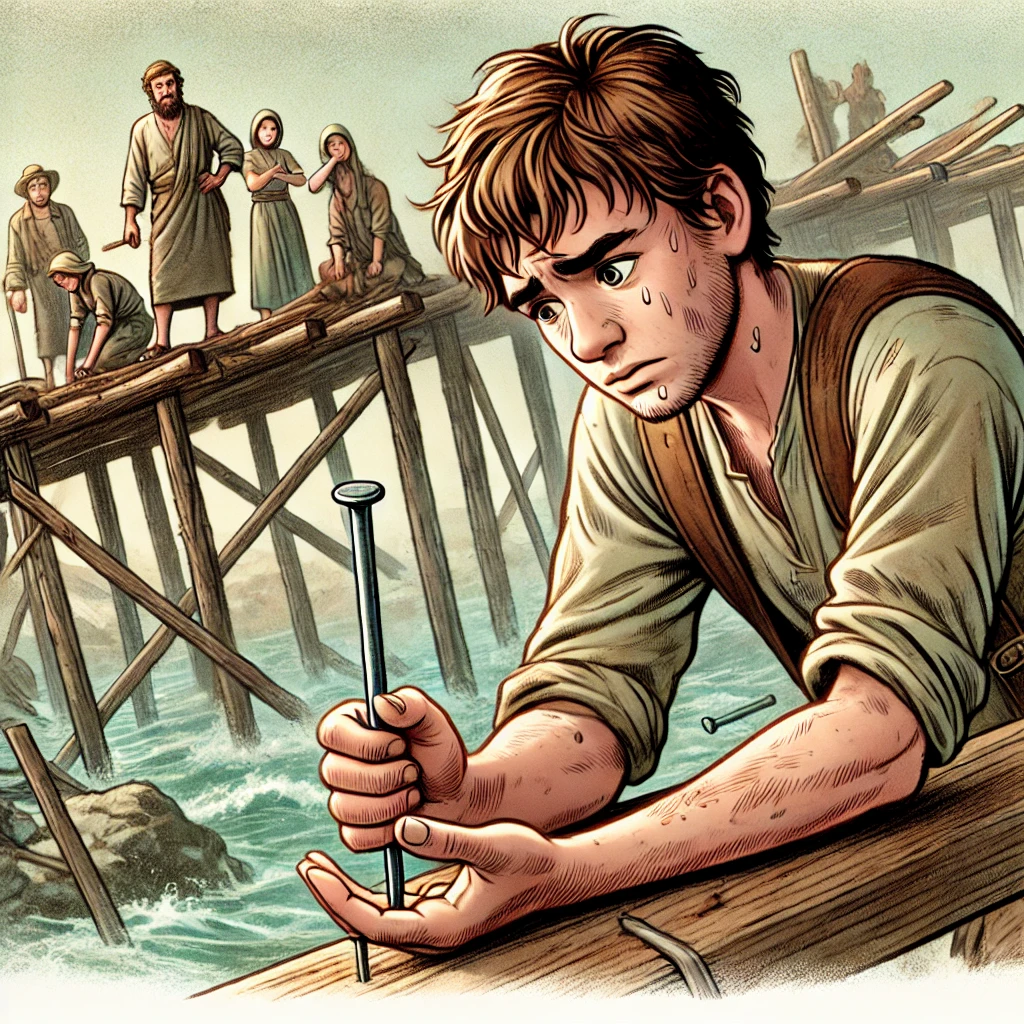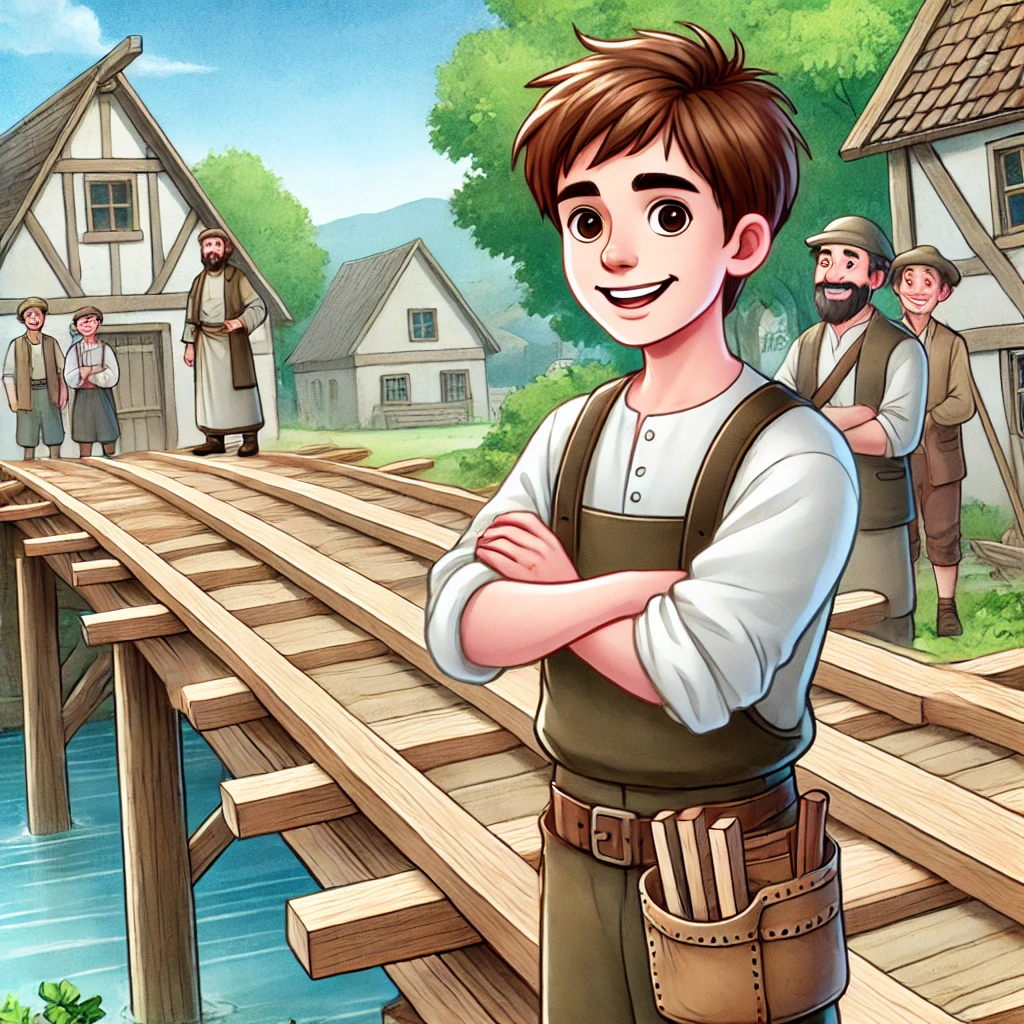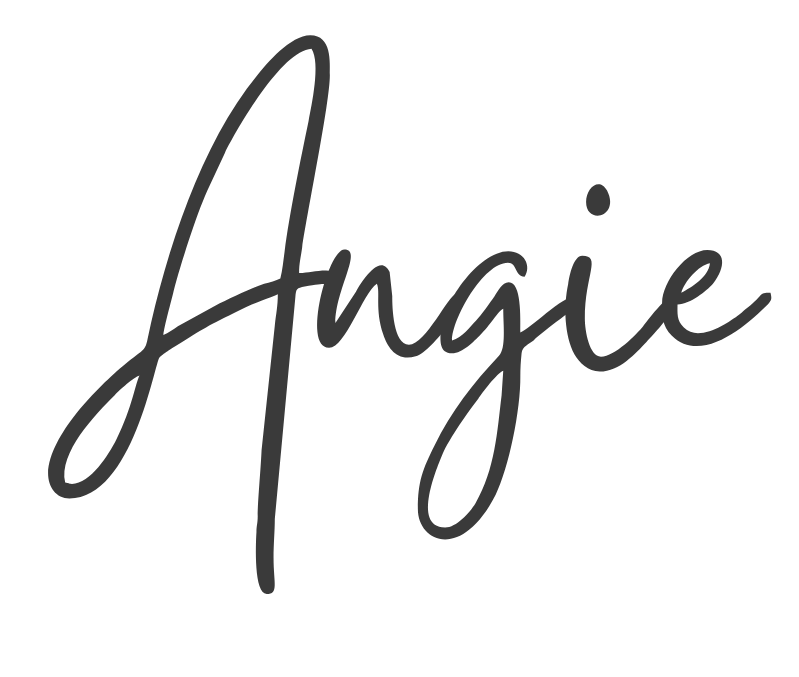Once upon a time, in a small village nestled in the valley of towering mountains, lived a young carpenter named Elias. He had inherited his craft from his father, who had inherited it from his father before him.
Elias was known for his ambition and eagerness to prove himself worthy of his family’s legacy. He dreamed of building something grand, something that would stand for generations—a beautiful wooden bridge that would connect their village to the outside world, crossing the turbulent river that isolated them.

This bridge was not just any bridge; it was a symbol of hope, connection, and a promise of a better future for the village.
For years, Elias studied the river’s flow, sketched his designs late into the night, and consulted the elders for wisdom.
Finally, the day arrived when he was ready to begin his great work. The whole village gathered to watch him drive in the first nail.

At first, things went smoothly. With each swing of his hammer, the bridge began to take shape. The villagers admired his dedication and skill, and Elias felt a surge of pride with every plank laid.
But as days turned into weeks, Elias’s eagerness began to cloud his judgment. In his haste to see the bridge completed, he ignored the subtle signs that something wasn’t right—pieces that didn’t fit perfectly, the slight warp in the beams, the sound of the wood creaking under pressure.
Then, it happened.
One evening, as Elias hammered in a crucial support, he realized he had made a critical mistake.

A crucial beam had been set at the wrong angle, and now the structure was unstable. The realization hit him like a wave crashing against the rocks. The bridge, his masterpiece, was flawed.
For a moment, Elias stood there, paralyzed. His heart sank, and doubt flooded his mind. What would the village think of him now? How could he have been so careless?
Elias faced a choice: he could ignore the mistake, drive the nail deeper, and hope that the bridge would hold—or he could pull the nail out, tear down his work, and start anew.
The thought of beginning again was daunting. It felt like admitting failure, like letting down not just himself but the entire village that had placed their hopes in his hands.
Yet, something deep inside told him that pushing forward with the flaw would be a greater failure.
With a heavy heart, Elias chose the latter. He grabbed his crowbar, placed it under the nail, and, with great effort, pulled it out. The sound of the nail coming loose was like a sigh of relief from the wood, as if it, too, had been holding its breath.
The villagers watched in stunned silence as Elias began to dismantle what he had so carefully built. Some whispered that he was a fool, that he had wasted their time and resources. Others simply shook their heads, disappointed.
But Elias did not waver. He worked tirelessly, day and night, carefully undoing his mistakes, inspecting each piece of wood, and making sure every joint was perfect. He sought advice, took his time, and embraced every setback as a lesson rather than a failure.

It was hard, grueling work. He questioned himself many times. There were moments when he felt like giving up. But each time, he would look at the rushing river and remember his dream of connecting his village to the wider world.
Weeks turned into months, and slowly, a new bridge began to emerge—one that was stronger, more beautiful, and more resilient than before.
This time, the wood didn’t creak under pressure.
The beams aligned perfectly.
There was no cutting corners, only meticulous craftsmanship and an unwavering commitment to doing things right.
One morning, as the sun rose over the mountains, Elias drove in the final nail. The bridge was complete.
It was not just a bridge—it was a testament to perseverance, to learning from one’s mistakes, and to the courage to start over when things go wrong.
The villagers gathered once more, this time not in skepticism, but in awe. They saw not just a bridge but a symbol of resilience and integrity.

As Elias stood before them, exhausted but proud, he realized that his journey had taught him something far more valuable than he had anticipated. Failure is not the end; it’s an opportunity to learn, to grow, and to build something better.
Sometimes, pulling out the nail and starting over is the bravest thing one can do.
The bridge stood firm and strong for many generations, a testament to the power of resilience, humility, and the courage to embrace failure. And whenever someone in the village faced a challenge, they would look to the bridge and remember Elias’s story—the story of the carpenter who wasn’t afraid to start over.

Leave a Reply